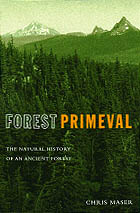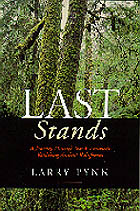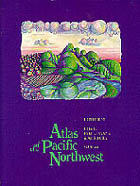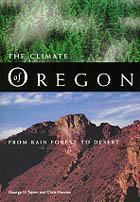 USGS Digital Line Graph 1:2,000,000 Alderman Library - University of Virginia State by State Government Land Ownership by the National Wilderness Institute USFS Region 6 Deschutes National Forest Fremont National Forest Malheur National Forest Mount Hood National Forest Ochoco National Forest Rogue River National Forest Siskiyou National Forest Siuslaw National Forest Umatilla National Forest Umpqua National Forest Wallowa-Whitman National Forest Willamette National Forest Winema National Forest  President William Howard Taft visited Salem in October 1911. He is standing in a touring car in downtown Salem with Secret Service agents and police patiently listening to the music the band conductor is leading. His Presidential proclamation of June 30, 1911 modified the boundaries of what is now the Siuslaw National Forest. Photographer Unknown, Ben Maxwell Collection Salem Public Library Historic Photograph Collections US Forest Service Atlas of Oregon Forests Oregon Department of Forestry Oregon Forest Resources Institute USFS NW Research Station USFS Recreation Agenda USFS Roadless Areas Site USFS Wilderness Agenda      Oregon State University Press 101 Waldo Hall Corvallis, OR 97331-6407 PHONE: (541) 737-3166 E-MAIL: osu.press@orst.edu | |
|
Theodore Roosevelt & the Siuslaw National Forest From President Theodore Roosevelt's Seventh Annual Message to Congress, December 3, 1907 ". . . The conservation of our natural resources and their proper use constitute the fundamental problem which underlies almost every other problem of our national life . . . "As a nation we not only enjoy a wonderful measure of present prosperity but if this prosperity is used aright it is an earnest of future success such as no other nation will have. The reward of foresight for this nation is great and easily foretold. But there must be the look ahead, there must be a realization of the fact that to waste, to destroy, our natural resources, to skin and exhaust the land instead of using it so as to increase its usefulness, will result in undermining in the days of our children the very prosperity which we ought by right to hand down to them amplified and developed. For the last few years, through several agencies, the government has been endeavoring to get our people to look ahead and to substitute a planned and orderly development of our resources in place of a haphazard striving for immediate profit . . . but if carried to an excess, it becomes foolishness. We are prone to speak of the resources of this country as inexhaustible; this is not so." "But there are certain other forms of waste which could be entirely stopped-the waste of soil by washing, for instance, which is among the most dangerous of all wastes now in progress in the United States, is easily preventible, so that this present enormous loss of fertility is entirely unnecessary. The preservation or replacement of the forests is one of the most important means of preventing this loss. We have made a beginning in forest preservation, but . . . so rapid has been the rate of exhaustion of timber in the United States in the past, and so rapidly is the remainder being exhausted, that the country is unquestionably on the verge of a timber famine which will be felt in every household in the land . . . "The present annual consumption of lumber is certainly three times as great as the annual growth; and if the consumption and growth continue unchanged, practically all our lumber will be exhausted in another generation, while long before the limit to complete exhaustion is reached the growing scarcity will make itself felt in many blighting ways upon our national welfare. About twenty percent of our forested territory is now reserved in national forests, but these do not include the most valuable timberlands, and in any event the proportion is too small to expect that the reserves can accomplish more than a mitigation of the trouble which is ahead for the nation . . . "We should acquire in the Appalachian and White Mountain regions all the forest-lands that it is possible to acquire for the use of the nation. These lands, because they form a national asset, are as emphatically national as the rivers which they feed, and which flow through so many States before they reach the ocean . . ." Read the complete message. Major Federal Land Management Agencies: Management of Our Nation's Lands and Resources Betsy A. Cody, Coordinator Environment and Natural Resources Policy Division May 15, 1995 SUMMARY Of the nearly 2.3 billion acres of land in the United States, approximately 650 million acres, or 28 percent, are owned by the Federal Government. Four agencies administer 96 percent of this Federal land for conservation, preservation, and/or development of natural resources. These four agencies are the Forest Service in the Department of Agriculture, and the Bureau of Land Management, the Fish and Wildlife Service, and the National Park Service in the Department of the Interior. The majority of these lands are in the West, a result of early treaties and land settlement patterns. Early in the history of the United States, the Federal Government owned as much as 80 percent of the total land area, but has disposed of more than 1.1 billion acres to States and to the private sector. Each of the four primary Federal land management agencies has its own unique mission and special responsibilities for the lands and resources under its jurisdiction. The National Park Service, although the smallest with 78 million acres, is probably the best known to the public for preserving, protecting and interpreting the natural, cultural, and historic lands and resources of the Nation. The U.S. Fish and Wildlife Service manages 87.5 million acres for the conservation and protection of fish and wildlife, allowing economic developments that are compatible with the purposes for which conservation measures were established. Both the Bureau of Land Management (BLM) and the U.S. Forest Service support a variety of uses on the lands which they administer, including recreation, timber harvesting, livestock grazing, fish and wildlife habitat, and wilderness. Most of the 266 million acres of BLM lands are rangelands, and more than half of the 191 million acres of Forest Service lands are forested. This report provides a background of current Federal land and resource ownership, a sense of the historical development of the Nation's land and settlement laws, and a basic understanding of each of the natural resource agency's missions and management. For discussions of natural resources management issues, such as timber harvesting, grazing, mining, fisheries and wildlife management, threatened and endangered species, private property rights, wetlands, and coastal issues, see CRS Report 95-92 ENR, An Introduction to Major Natural Resource Issues in the 104th Congress. Each section of this report is followed by a list of references, which includes various CRS publications on issues related to Federal lands and management systems. THE NATIONAL FOREST SYSTEM In 1891, Congress granted the President the authority (now repealed) to establish forest reserves from the public domain. Six years later, in 1897, Congress stated that the forest reserves were: . . . to improve and protect the forest within the reservation, or for the purpose of securing favorable conditions of water flows, and to furnish a continuous supply of timber for the use and necessities of the citizens of the United States.Initially, the administration of the forest reserves lay with the Division of Forestry in the General Land Office of the U.S. Department of the Interior. In 1905, this division was combined with the U.S. Department of Agriculture Bureau of Forestry, renamed the Forest Service, and the administration of the 56 million acres of forest reserves (later renamed "national forests") was transferred to the new agency. (8) In 1906 and 1907, President Theodore Roosevelt more than doubled the acreage of the forest reserves. As a result, Congress at various times limited the authority of the President to add to the system. However, in 1911 Congress passed the Weeks Act, authorizing additions to the National Forest System through the purchase of private lands. Under this authority and other specific Acts, the National Forest System has continued to grow slowly, from 154 million acres in 1919 to 192 million acres in 1993. This growth has resulted from purchases and donations of private land and from land transfers primarily from the BLM. Management of the system is one of the four principal programs of the Forest Service. (9) The management goals for the National Forest System were further articulated in the Multiple-Use Sustained-Yield Act of 1960, which states: It is the policy of the Congress that the national forests are established and shall be administered for outdoor recreation, range, timber, watershed, and wildlife and fish purposes. The purposes of this Act are declared to be supplemental to, but not in derogation of, the purposes for which the national forests were established as set forth in the Act of June 4, 1897. . . The establishment and maintenance of areas as wilderness are consistent with the purposes and provisions of this Act.The Multiple-Use Sustained-Yield Act directs resource management of the national forests for the combination of uses that best meets the needs of the American people. Management of the resources was to be coordinated for "multiple use"--considering the relative values of the various resources, though not necessarily maximizing dollar returns, nor requiring that any one particular area be managed for all or even most uses. The Act also calls for "sustained yield" -- a high level of resource outputs maintained in perpetuity but without impairing the productivity of the land. Read the complete report. Note: The Congressional Research Service (CRS), part of the Library of Congress, prepares its reports for the U.S. Congress. CRS products undergo review for accuracy and objectivity and contain nontechnical information that can be very useful to people interested in environmental policy. CRS does not itself provide these documents to the general public. Although CRS documents are prepared specifically for Congress and not widely distributed, their distribution is not protected by law or copyright. NCSE is committed to expanding, maintaining and updating its database of reports, making them available and searchable for the public. National Council for Science and the Environment 1725 K St., NW, Suite 212 Washington, DC 20006 Copyright © 2001 Dennis Cowals All rights reserved. |